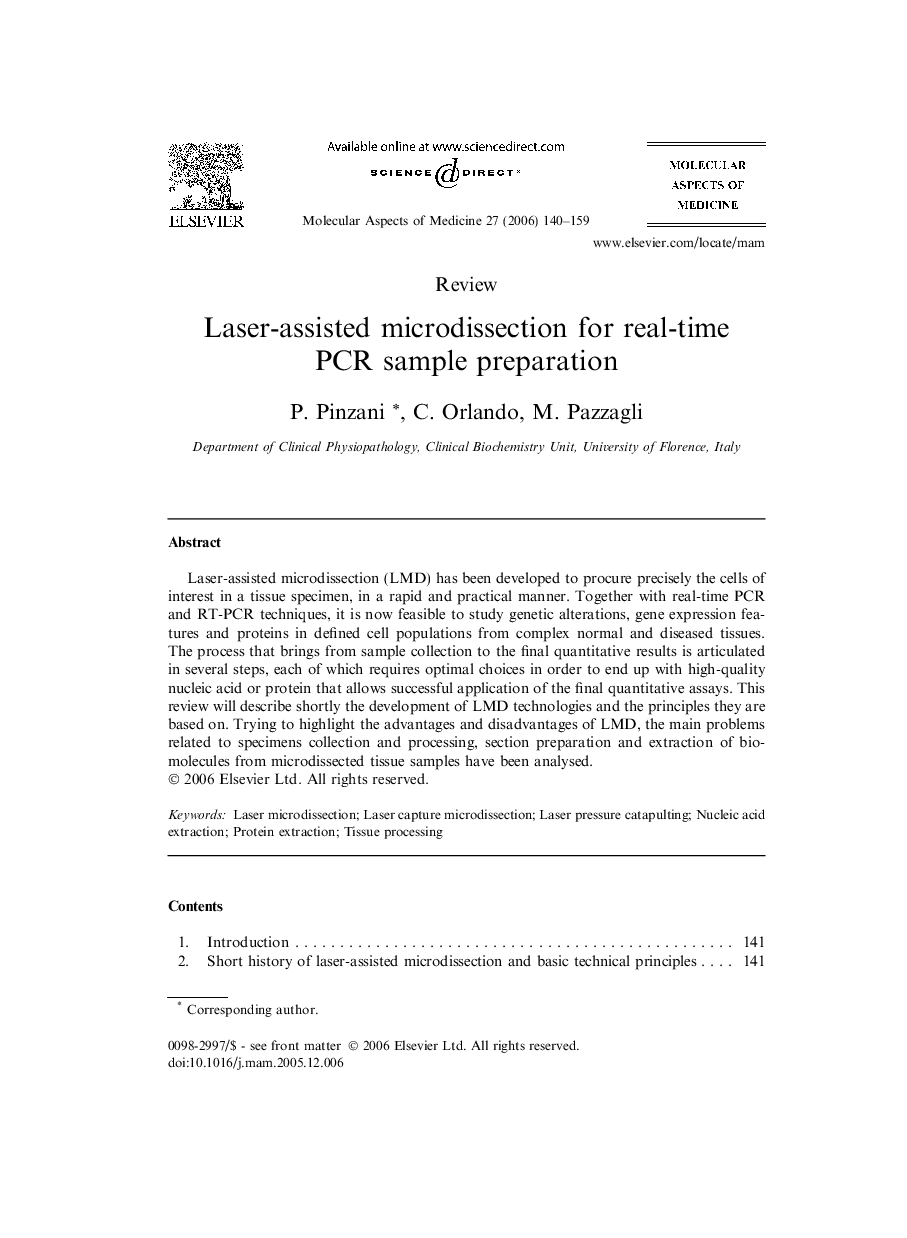| Article ID | Journal | Published Year | Pages | File Type |
|---|---|---|---|---|
| 1995977 | Molecular Aspects of Medicine | 2006 | 20 Pages |
Laser-assisted microdissection (LMD) has been developed to procure precisely the cells of interest in a tissue specimen, in a rapid and practical manner. Together with real-time PCR and RT-PCR techniques, it is now feasible to study genetic alterations, gene expression features and proteins in defined cell populations from complex normal and diseased tissues. The process that brings from sample collection to the final quantitative results is articulated in several steps, each of which requires optimal choices in order to end up with high-quality nucleic acid or protein that allows successful application of the final quantitative assays. This review will describe shortly the development of LMD technologies and the principles they are based on. Trying to highlight the advantages and disadvantages of LMD, the main problems related to specimens collection and processing, section preparation and extraction of bio-molecules from microdissected tissue samples have been analysed.
